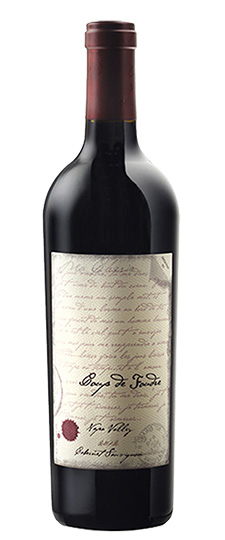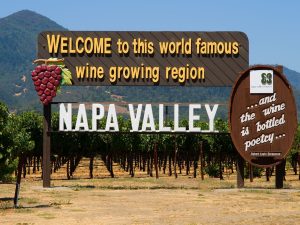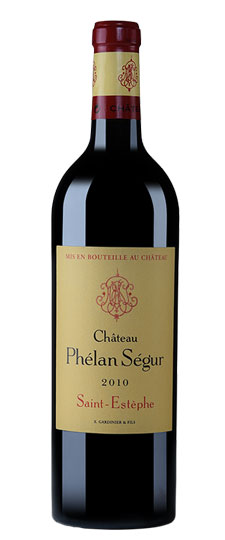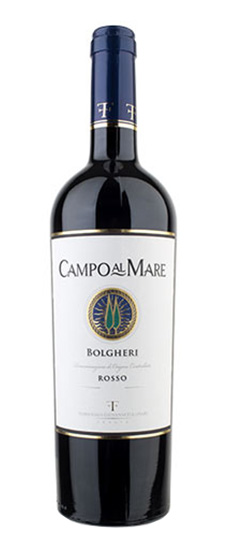Wine Score
Vinous
The 2010 Vin Perdu is gorgeous. Plums, black currants, grilled herbs, tar and licorice are some of the many notes that burst from the glass in this full-bodied, intense wine. A dark, rich, voluptuous red, the 2010 Vin Perdu shows Heidi Barrett at her best. Hints of menthol, tar, licorice and pencil shavings are layered into the powerful, inviting finish. The 2010 is loaded with serious depth and power. In 2010 the blend is 75% Cabernet Sauvignon, 18% Syrah, 2% Petit Verdot, 2% Petit Sirah, 2% Cabernet Franc and 1% Merlot. (Antonio Galloni)
Robert Parker’s Wine Advocate
Another interesting offering from this winery is the blend of 75% Cabernet Sauvignon, 18% Syrah, and the rest Petit Verdot, Petite Sirah and Cabernet Franc, the 2010 Vin Perdu. Lovely floral, blueberry and black fruit aromatics jump from the glass of this dark purple-colored wine. Although firmly structured with plenty of tannin, it also possesses a nice underbelly of flesh that comes across as pure, medium to full-bodied, and potentially complex after additional bottle age. There appears to be a lot going on in this cuvee, but at present it is playing it close to the vest and requires a lot of air. It should benefit from 2-3 more years of bottle age, and last for 15+ years.
Grape Variety
Bordeaux Blend Red Wine
A Bordeaux Blend, at its most basic, is any combination of those grape varieties typically used to make the red wines of Bordeaux. The phrase, which seems to have originated with British wine merchants in the 19th Century, relates as much to wines made from the blend as to the grape variety combination itself (© Copyright material, Wine-Searcher.com). Far from being an officially defined or legal term, it is almost never used for wine-labeling purposes (although it occasionally appears on back labels). Its equivalent in the United States is Meritage, which is not only legally defined, but also a registered trademark.
Red Bordeaux Blends are known for their powerful structure and deep flavors. Dark fruits and berries such as plum and blackcurrant are commonly used to describe the flavors of red Bordeaux, although there is an unlimited range of terms that have been ascribed to them. Tannins tend to be relatively high in these wines, giving them a firm structure.
 Cabernet Sauvignon is widely accepted as a compulsory component of any Bordeaux Blend, with Merlot following close behind. In fact, the majority of Bordeaux Blend wines are often made exclusively from a blend of these two varieties. The remaining components are Cabernet Franc, Petit Verdot and Malbec, used in varying combinations and proportions. Even Carmenere is on the list of possible ingredients, despite being rarely used by modern Bordeaux vineyards (notable exceptions include Haut-Bailly, Brane-Cantenac and Clerc-Milon).
Cabernet Sauvignon is widely accepted as a compulsory component of any Bordeaux Blend, with Merlot following close behind. In fact, the majority of Bordeaux Blend wines are often made exclusively from a blend of these two varieties. The remaining components are Cabernet Franc, Petit Verdot and Malbec, used in varying combinations and proportions. Even Carmenere is on the list of possible ingredients, despite being rarely used by modern Bordeaux vineyards (notable exceptions include Haut-Bailly, Brane-Cantenac and Clerc-Milon).
With the global wine industry expanding and developing at pace, the use of the term “Bordeaux Blend” is changing. Although a product of the Old World, it remains a useful concept, allowing the wine industry and enthusiasts everywhere to talk about Bordeaux-style red wines as an international group, irrespective of regionality.
Flexibility and a useful vagueness are key assets of the term “Bordeaux Blend”, but are also its Achilles’ heel; if it becomes too broad or too widely used it will lose its meaning. Is a Bordeaux Blend still a Bordeaux Blend if it contains Zinfandel, Sangiovese or Syrah? Without a formal definition to go by, the answer to that question lies entirely in the collective consciousness of those who use the phrase. Provided that Bordeaux’s vignerons don’t discover a new grape variety (Cabernet Sauvignon is only a few hundred years old), the term’s definition remains relatively clear.
The red Bordeaux style has reached almost every winegrowing country, with new candidates looking to emulate Bordeaux’s success. North and South America, Australia, South Africa and New Zealand all have their own expressions of the Bordeaux Blend. Even countries in North Africa and the Middle East produce their own interpretations of the style.
For more information on the various permutations of the Bordeaux Blend, please see Cabernet Sauvignon – Merlot, Cabernet Franc – Cabernet Sauvignon or Cabernet Franc – Merlot.
Food matches for Bordeaux Blend wines include:
Steak entrecôte marchand de vin (red-wine sauce and shallots)
Grass-fed wagyu rib-eye fillet
Roast leg of lamb with rosemary and garlic
Region
Napa Valley Wine
Napa Valley, an hour’s drive north of San Francisco, California, is the most famous and prestigious wine region anywhere in the New World. Although a number of grape varieties are grown in the valley’s vineyards, the area is particularly known for its Cabernet Sauvignon. The classic ‘Napa Cab’, the archetypal Napa Valley wine, is a rich, oak-aged red with aromas of blackcurrant, boysenberry, liquorice, vanilla and smoky, bittersweet chocolate.
Situated immediately north of San Pablo Bay, the valley runs roughly SE – NW for approximately 35 miles (60km) between the Vacas and Mayacamas mountain ranges (to the east and west respectively). The scenic 40-minute drive between the Napa and Calistoga townships passes through some of the most valuable viticultural real estate on Earth.
There are several reasons for Napa Valley’s global renown as a wine region. Most obvious is that the wines are produced to high standards, in a popular style, and are very well marketed. Then there is the region’s accessibility from San Francisco. This draws millions of wine tourists to the valley each year to sample its wines and world-class gastronomy. And no less important (even after almost four decades) is the triumph of Napa Valley wines over their rivals from Bordeaux and Burgundy in the 1976 Paris Judgment.
Wine has been made in Napa Valley since the 19th century, but it is only since the 1960s that wine of any particular quality has been produced. The founding pioneers of Napa Valley winemaking were George C. Yount (see Yountville), and John Patchett and his winemaker Charles Krug, founder of the eponymous winery. Also of note are the Beringer brothers Jacob and Frederick, whose Beringer Vineyards (est. 1875) is one of California’s oldest continuously operated wineries and features on the the U.S. National Register of Historic Places. Robert Mondavi, who established his winery in 1966, is considered to be one of the pioneers of Napa’s modern wine industry, as well as being one of the first proponents of varietal labeling.
The range of grape varieties grown in the Napa Valley has evolved steadily over the 150 years since Yount planted his first vines. Cabernet Sauvignon has risen confidently to become Napa’s star performer, and is the most widely planted grape in almost all of the valley’s sub-regions. The notable exception to this rule is Carneros, whose cool, breezy mesoclimate is better suited to Pinot Noir and Chardonnay. Merlot is also prominent, although since its fall from favor in the 1990s it is now used mostly as a blending component for Napa’s Meritage wines and Bordeaux blends. Although it represents only a small proportion of the valley’s vineyard area here, Zinfandel remains significant in the Napa wine portfolio. Hillside sites above the valley floor provide exactly the kind of warm, dry environment in which Zinfandel (California’s signature variety) performs best, particularly on rocky, free-draining slopes.
White wines are strongly outnumbered here, but play a valuable supporting role, bringing an element of diversity to the valley. Once upon a time, Riesling was the variety of choice, but has now been replaced almost completely by Sauvignon Blanc and Chardonnay.
Climate, geology and topography are three essential components in what makes Napa Valley such a first-rate viticultural area. The combined influences of San Pablo Bay and the hills of the North Coast Ranges are responsible for the valley’s very particular mesoclimate. The bay generates morning fog, and the hills channel it inland, up into the valley. Without this fog that comes rolling in from the bays, the valley’s climate would be substantially warmer than it is, making it difficult to achieve structure and balance in the wines. The fog doesn’t reach the higher parts of the valley, however, leaving these to rely on the cooling effects of altitude to keep their vines in balance.
Producer Notes
About Amuse Bouche Winery
Amuse Bouche is a Napa Valley winery that was established in 2002 by John Schwartz and prominent Napa winemaker Heidi Barrett. The winery’s flagship Pomerol-inspired Merlot was created in response to Napa’s famously elusive Cult Cabernet wines. Each label features a commissioned piece of art by a prominent artist.
 The first vintage of Amuse Bouche was limited to 3000 bottles, and was produced from Merlot and Cabernet Franc grown in Oakville. Since then, production has increased to around 8400 bottles a year, and the grapes are now sourced from the eastern hills of Rutherford. The wine is aged in new oak barrels from a combination of French cooperages, including Taransaud, Radoux and Gamba.
The first vintage of Amuse Bouche was limited to 3000 bottles, and was produced from Merlot and Cabernet Franc grown in Oakville. Since then, production has increased to around 8400 bottles a year, and the grapes are now sourced from the eastern hills of Rutherford. The wine is aged in new oak barrels from a combination of French cooperages, including Taransaud, Radoux and Gamba.
Barrett produces two additional wines under the Amuse Bouche umbrella: Vin Perdu and Prêt à Boire. Vin Perdu is essentially the estate’s second wine, and is made from a blend of Bordeaux grapes left over from Barrett’s primary wine labels including Amuse Bouche, Au Sommet, La Sirena, Lamborn, and Fantesca estates. Prêt à Boire rosé has been produced since 2010 and is made from Rutherford-grown Syrah and Grenache. Fewer than 5000 bottles are produced annually.

![Amuse Bouche, Napa Valley [Merlot/Cabernet Franc] 2012](https://www.wineyou.com/wp-content/uploads/2017/06/Amuse-Bouche-Napa-Valley-MerlotCabernet-Franc-2012.jpg)

![Amuse Bouche, Napa Valley [Merlot/Cabernet Franc] 2010 Amuse Bouche, Napa Valley [Merlot/Cabernet Franc] 2010](https://www.wineyou.com/wp-content/uploads/2017/06/Amuse-Bouche-Napa-Valley-Merlot-Cabernet-Franc-2010.jpg)





